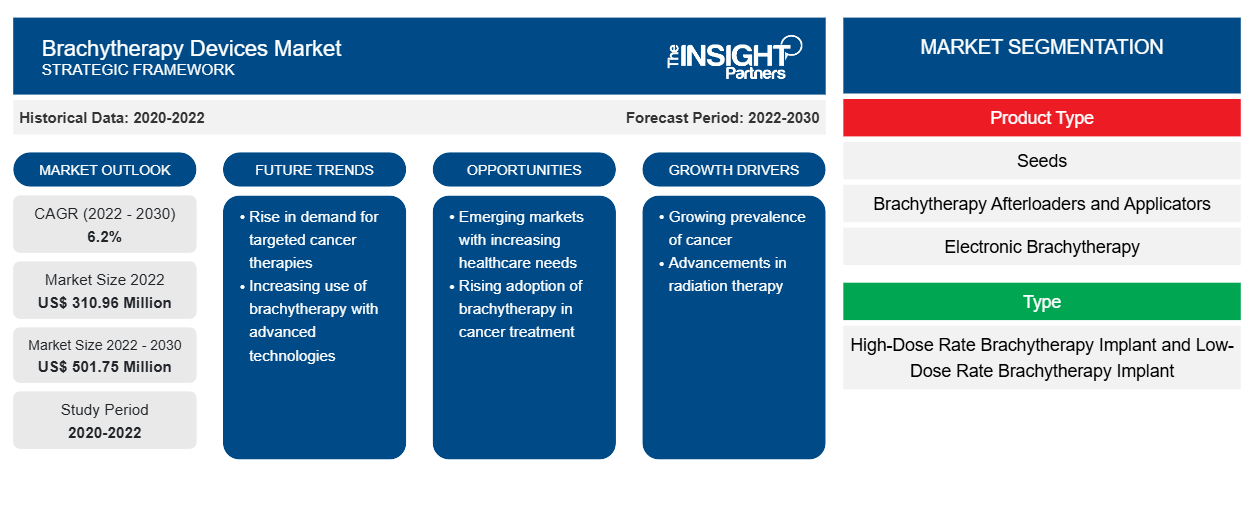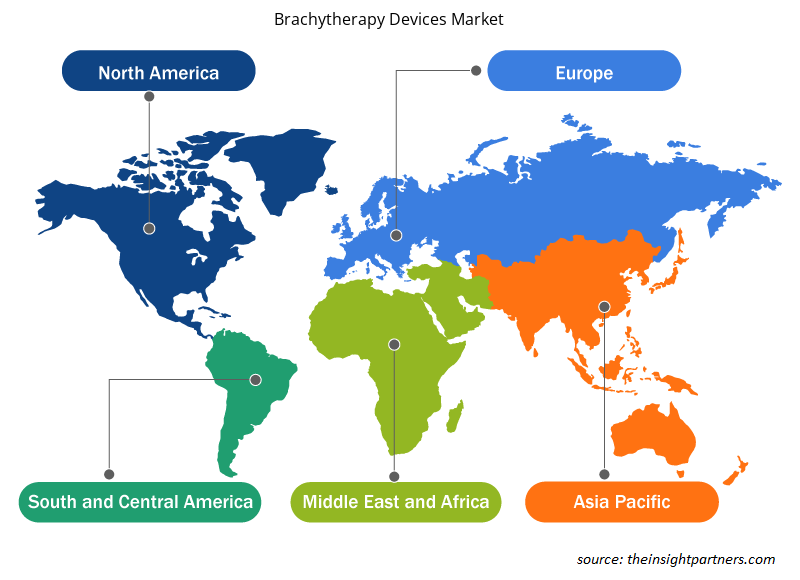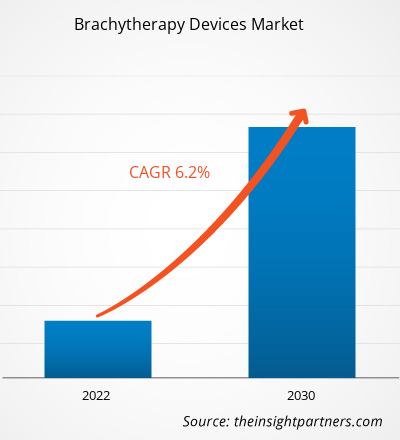[Research Report] The brachytherapy devices market is expected to grow from US$ 343.57 million in 2024 to US$ 534.20 million by 2031; it is estimated to register a CAGR of 6.7% from 2025 to 2031.
Analyst Viewpoint
Brachytherapy, also known as internal radiation therapy (IRT), involves inserting radioactive devices such as seeds, ribbons, wires, needles, capsules, balloons, or tubes near tumors to deliver high doses of radiation. This treatment is effective in eliminating and shrinking tumors. Brachytherapy is distinct from other forms of radiation therapy because it allows for administering higher doses of radiation while minimizing damage to surrounding organs. The growing prevalence of cancers is a major factor augmenting the brachytherapy devices market growth. Additionally, technological advancements and the rise in the adoption of IRTs for cancer management are contributing to the market growth. However, risks associated with brachytherapy and a lack of skilled technicians hamper the market growth.
Market Insights
The increasing prevalence of cancers, including breast cancer, prostate cancer, and cervical cancer, propels the brachytherapy devices market size. According to the statistics published by the World Health Organization (WHO) in February 2024, ~ 20 million new cases of cancer and 9.7 million deaths were reported globally in 2022. Among these cases, breast cancer is the most common type of cancer, with 2.3 million cases diagnosed in women. In addition, prostate and colorectal cancers are the second and third most commonly occurring cancers in men. Brachytherapy devices are frequently used to treat gynecologic, prostate, breast, and other types of cancer effectively. These devices include wires, seeds, or rods filled with radioactive materials implanted near the tumor to treat it by emitting radiation for a specified distance.
Moreover, brachytherapy is less time-consuming and has fewer side effects than other radiation therapies. According to an article published by Elsevier in June 2023, the study aimed to compare the results of brachytherapy over external beam radiation therapy (EBRT) by collecting a large multi-institutional database, concluded that the use of brachytherapy devices has been linked with improved survival rates and a reduced incidence of distant cancer metastases as compared to EBRT. This finding is significant and could encourage the adoption of brachytherapy as a cost-effective and efficient treatment option for patients who have intermediate- to high-risk prostate cancer.
Therefore, as the prevalence of cancer continues to rise globally, the demand for brachytherapy as a widely accessible treatment option contributes significantly to boosting brachytherapy devices market growth.
Customize This Report To Suit Your Requirement
You will get customization on any report - free of charge - including parts of this report, or country-level analysis, Excel Data pack, as well as avail great offers and discounts for start-ups & universities
Brachytherapy Devices Market: Strategic Insights

- Get Top Key Market Trends of this report.This FREE sample will include data analysis, ranging from market trends to estimates and forecasts.
You will get customization on any report - free of charge - including parts of this report, or country-level analysis, Excel Data pack, as well as avail great offers and discounts for start-ups & universities
Brachytherapy Devices Market: Strategic Insights

- Get Top Key Market Trends of this report.This FREE sample will include data analysis, ranging from market trends to estimates and forecasts.
Report Segmentation and Scope
The “brachytherapy devices market analysis” has been carried out by considering the following segments: product type, type, application and end user.
The market, by product type, is segmented seeds, brachytherapy afterloaders and applicators, and electronic brachytherapy. Bytype, the market is bifurcated into high-dose rate brachytherapy implant and low-dose rate brachytherapy implant. The market, by application, is segmented into breast cancer, cervical cancer, prostate cancer, lung cancer, and others.
The market, by end user, is segmented into hospitals and specialty clinics, ambulatory surgical centers, and others.
The scope of the global brachytherapy devices market report entails North America (the US, Canada, and Mexico), Europe (Germany, France, Italy, the UK, Spain, and the Rest of Europe), Asia Pacific (China, Japan, India, Australia, South Korea, and the Rest of Asia Pacific), the Middle East & Africa (South Africa, Saudi Arabia, the UAE, and the Rest of Middle East & Africa), and South & Central America (Brazil, Argentina, and the Rest of South & Central America).
Product Type-Based Insights
Based on product type, the brachytherapy devices market is segmented into seeds, brachytherapy afterloaders and applicators, and electronic brachytherapy. The brachytherapy afterloaders and applicators segment held the largest market share in 2022 and is anticipated to register the highest CAGR during 2022–2030.
Type-Based Insights
The market, by type, is bifurcated into high-dose brachytherapy implant and low-dose rate brachytherapy implant. The low-dose rate brachytherapy implant segment held a larger brachytherapy devices market share in 2022 and is anticipated to grow at a faster CAGR from 2022 to 2030.
Application-Based Insights
The brachytherapy devices market, by application, is segmented into breast cancer, cervical cancer, prostate cancer, lung cancer, and others. The prostate cancer segment held the largest market share in 2022 and is anticipated to register the highest CAGR during 2022–2030.
End User-Based Insights
Based on end user, the market is segmented into hospitals and specialty clinics, ambulatory surgical centers, and others. The hospitals segment held the largest market share in 2022. This can be attributed to the availability of better facilities and skilled physicians in hospitals over other surgical centers to perform minimally invasive procedures.
Regional Analysis
Based on geography, the market is segmented into North America, Asia Pacific, Europe, the Middle East & Africa, and South & Central America. In terms of revenue, North America dominated the brachytherapy devices market share in 2022. The brachytherapy devices market in this region is dominated by the US. This can be attributed to various factors, including the increasing cases of breast cancer among women and prostate cancer among men in the region. According to the Pan America Health Organization (PAHO), in 2020, an estimated 4 million people in the Americas were diagnosed with cancer, which is predicted to increase by ~60% by 2040.
Additionally, the presence of market players, including BD, Isoray Inc., and Elekta, and the availability of advanced brachytherapy devices present a sizable opportunity for the market expansion. For instance, in July 2021, GenesisCare expanded its brachytherapy service by procuring 27 Flexitron brachytherapy afterloader systems and service agreements from Elekta. These advanced cancer treatment devices enabled GenesisCare to keep up with the latest technology and provide high-quality care to its patients across their centers in the US.
Brachytherapy Devices Market Regional Insights
The regional trends and factors influencing the Brachytherapy Devices Market throughout the forecast period have been thoroughly explained by the analysts at Insight Partners. This section also discusses Brachytherapy Devices Market segments and geography across North America, Europe, Asia Pacific, Middle East and Africa, and South and Central America.

- Get the Regional Specific Data for Brachytherapy Devices Market
Brachytherapy Devices Market Report Scope
| Report Attribute | Details |
|---|---|
| Market size in 2024 | US$ 343.57 Million |
| Market Size by 2031 | US$ 534.20 Million |
| Global CAGR (2025 - 2031) | 6.7% |
| Historical Data | 2021-2023 |
| Forecast period | 2025-2031 |
| Segments Covered |
By Product Type
|
| Regions and Countries Covered | North America
|
| Market leaders and key company profiles |
Brachytherapy Devices Market Players Density: Understanding Its Impact on Business Dynamics
The Brachytherapy Devices Market is growing rapidly, driven by increasing end-user demand due to factors such as evolving consumer preferences, technological advancements, and greater awareness of the product's benefits. As demand rises, businesses are expanding their offerings, innovating to meet consumer needs, and capitalizing on emerging trends, which further fuels market growth.
Market players density refers to the distribution of firms or companies operating within a particular market or industry. It indicates how many competitors (market players) are present in a given market space relative to its size or total market value.
Major Companies operating in the Brachytherapy Devices Market are:
- Elekta
- Varian Medical Systems, Inc.
- BEBIG Medical
- Theragenics Corporation
- IsoAid
- Siemens Healthineers AG
Disclaimer: The companies listed above are not ranked in any particular order.

- Get the Brachytherapy Devices Market top key players overview
Industry Developments and Future Opportunities:
The brachytherapy devices market forecast can help stakeholders in this marketplace plan their growth strategies. As per company press releases, a few strategic developments by leading players operating in the global market are listed below:
- In October 2023, Elekta announced acquisition of the Xoft business from iCAD, Inc. through an asset acquisition. By acquiring the Xoft Axxent Electronic Brachytherapy (eBx) System, along with the transfer of employees, the company aims to provide an expanded range of cancer treatment options and electronic brachytherapy technology.
- As per the press release in July 2023, CIVCO Radiotherapy announced its partnership with Qfix, a company that provides devices for positioning and immobilizing patients, during the American Society for Radiation Oncology (ASTRO) Annual Meeting held from October 23–26, 2022 in San Antonio, Texas.
- In July 2022, BEBIG Medical acquired Wolf-Medizintechnik GmbH (WOmed), a German company that supplies cutting-edge X-ray therapy and newly developed intraoperative radiation therapy products to the global market. The acquisition aimed to expand BEBIG Medical's product portfolio in radiation therapy for cancer treatment.
- In December 2020, Varian Medical Systems, Inc, launched four new brachytherapy applicator sets for HDR brachytherapy of vagina, cervix, uterus, endometrium, and rectum. The new suite of applicators is designed to address issues of applicator size, ease of use, and MRI imaging support. This new addition is made more user-friendly and comfortable for patients, allowing clinicians to treat more patients on an outpatient basis.
Elekta; Varian Medical Systems, Inc.; BEBIG Medical; Theragenics Corporation; IsoAid; Siemens Healthineers AG; BXTA; BD; Eckert and Ziegler; and Perspective Therapeutics are some of the key companies profiled in the brachytherapy devices market report. These leading players focus on expanding and diversifying their market presence and clientele, tapping business opportunities in the market.
Frequently Asked Questions
Which application segment dominates the brachytherapy therapy devices market?
The brachytherapy therapy devices market, by application, is segmented into breast cancer, cervical cancer, prostate cancer, lung cancer, and others. The prostate cancer segment held the largest market share in 2022 and is anticipated to register the highest CAGR during 2025–2031.
Which product type segment dominates the brachytherapy therapy devices market?
The brachytherapy therapy devices market, by product type, is segmented into seeds, brachytherapy afterloaders and applicators, and electronic brachytherapy. The brachytherapy afterloaders and applicators segment held the largest market share in 2022 and is anticipated to register the highest CAGR during 2022–2030.
What was the estimated brachytherapy therapy devices market size in 2022?
The brachytherapy therapy devices market was valued at US$ 343.57 million in 2024.
Who are the major players in the brachytherapy therapy devices market?
The brachytherapy therapy devices market majorly consists of the players such as Elekta; Varian Medical Systems, Inc.; BEBIG Medical; Theragenics Corporation; IsoAid; Siemens Healthineers AG; BXTA; BD; Eckert and Ziegler; and Perspective Therapeutics.
What factors drive the brachytherapy therapy devices market?
Key factors driving the brachytherapy therapy devices market growth include the growing prevalence of cancer, and technological advancements.
What are the growth estimates for the brachytherapy therapy devices market till 2030?
The brachytherapy therapy devices market is expected to be valued at US$ 534.20 million in 2031.
What are brachytherapy therapy devices?
Brachytherapy devices such as seeds, ribbons, wires, needles, capsules, balloons, or tubes are used either inside the target volume or near the tumors to deliver high doses of radiation for the treatment of cancer and other benign disorders. Depending on the duration of radioactive sources left in place, brachytherapy can be provided by either high-dose rate (HDR) or low-dose rate (LDR) procedures.
- Historical Analysis (2 Years), Base Year, Forecast (7 Years) with CAGR
- PEST and SWOT Analysis
- Market Size Value / Volume - Global, Regional, Country
- Industry and Competitive Landscape
- Excel Dataset
Testimonials
I wish to appreciate your support and the professionalism you displayed in the course of attending to my request for information regarding to infectious disease IVD market in Nigeria. I appreciate your patience, your guidance, and the fact that you were willing to offer a discount, which eventually made it possible for us to close a deal. I look forward to engaging The Insight Partners in the future, all thanks to the impression you have created in me as a result of this first encounter.
DR CHIJIOKE ONYIA, MANAGING DIRECTOR, PineCrest Healthcare Ltd.The Insight Partners delivered insightful, well-structured market research with strong domain expertise. Their team was professional and responsive throughout. The user-friendly website made accessing industry reports seamless. We highly recommend them for reliable, high-quality research services
Yukihiko Adachi CEO, Deep Blue, LLC.Reason to Buy
- Informed Decision-Making
- Understanding Market Dynamics
- Competitive Analysis
- Customer Insights
- Market Forecasts
- Risk Mitigation
- Strategic Planning
- Investment Justification
- Identifying Emerging Markets
- Enhancing Marketing Strategies
- Boosting Operational Efficiency
- Tracking Industry Innovations
- Aligning with Regulatory Trends
Yes! We provide a free sample of the report, which includes Report Scope (Table of Contents), report structure, and selected insights to help you assess the value of the full report. Please click on the "Download Sample" button or contact us to receive your copy.
Absolutely — analyst assistance is part of the package. You can connect with our analyst post-purchase to clarify report insights, methodology or discuss how the findings apply to your business needs.
Once your order is successfully placed, you will receive a confirmation email along with your invoice.
• For published reports: You’ll receive access to the report within 4–6 working hours via a secured email sent to your email.
• For upcoming reports: Your order will be recorded as a pre-booking. Our team will share the estimated release date and keep you informed of any updates. As soon as the report is published, it will be delivered to your registered email.
We offer customization options to align the report with your specific objectives. Whether you need deeper insights into a particular region, industry segment, competitor analysis, or data cut, our research team can tailor the report accordingly. Please share your requirements with us, and we’ll be happy to provide a customized proposal or scope.
The report is available in either PDF format or as an Excel dataset, depending on the license you choose.
The PDF version provides the full analysis and visuals in a ready-to-read format. The Excel dataset includes all underlying data tables for easy manipulation and further analysis.
Please review the license options at checkout or contact us to confirm which formats are included with your purchase.
Our payment process is fully secure and PCI-DSS compliant.
We use trusted and encrypted payment gateways to ensure that all transactions are protected with industry-standard SSL encryption. Your payment details are never stored on our servers and are handled securely by certified third-party processors.
You can make your purchase with confidence, knowing your personal and financial information is safe with us.
Yes, we do offer special pricing for bulk purchases.
If you're interested in purchasing multiple reports, we’re happy to provide a customized bundle offer or volume-based discount tailored to your needs. Please contact our sales team with the list of reports you’re considering, and we’ll share a personalized quote.
Yes, absolutely.
Our team is available to help you make an informed decision. Whether you have questions about the report’s scope, methodology, customization options, or which license suits you best, we’re here to assist. Please reach out to us at sales@theinsightpartners.com, and one of our representatives will get in touch promptly.
Yes, a billing invoice will be automatically generated and sent to your registered email upon successful completion of your purchase.
If you need the invoice in a specific format or require additional details (such as company name, GST, or VAT information), feel free to contact us, and we’ll be happy to assist.
Yes, certainly.
If you encounter any difficulties accessing or receiving your report, our support team is ready to assist you. Simply reach out to us via email or live chat with your order information, and we’ll ensure the issue is resolved quickly so you can access your report without interruption.















The List of Companies - Brachytherapy Devices Market
- Elekta
- Varian Medical Systems, Inc.
- BEBIG Medical
- Theragenics Corporation
- IsoAid
- Siemens Healthineers AG
- BXTA
- BD
- Eckert and Ziegler
- Perspective Therapeutics






 Get Free Sample For
Get Free Sample For